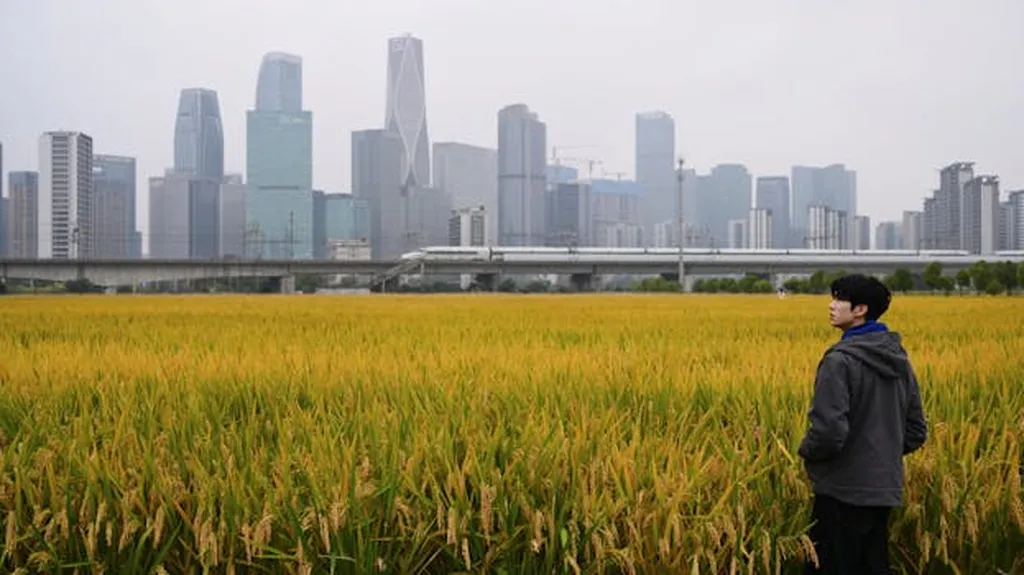In the heart of China’s Yangtze River Basin, farmers are facing a growing challenge: climate change and delayed harvests of preceding crops are pushing wheat sowing dates later and later. This delay is becoming a significant hurdle to achieving consistent, high wheat yields. But a recent study published in *Agronomy* offers a glimmer of hope, using cutting-edge technology to evaluate wheat varieties’ tolerance to late sowing, potentially revolutionizing how farmers and breeders approach this pressing issue.
The research, led by Yuanyuan Zhao from the Jiangsu Key Laboratory of Crop Genetics and Physiology at Yangzhou University, employed unmanned aerial vehicles (UAVs) equipped with multispectral cameras to monitor different wheat varieties at various growth stages. The team compared wheat sown at the usual time (M1) with wheat sown late but at a higher density (M2). By quantifying yield loss, they categorized the wheat’s tolerance to late sowing and examined the correlation between differential vegetation indices (D-VIs) and this tolerance.
The findings are promising. The J2-Logistic model used in the study demonstrated exceptional classification performance, with precision and recall values reaching as high as 1.00 for the most sensitive wheat types. The mean average precision (mAP) of the model was an impressive 0.92. “This study proposes a high-throughput and low-cost evaluation method for wheat tolerance to late sowing,” Zhao explained. “It can provide a rapid predictive tool for screening suitable varieties for late sowing and facilitating late-sown wheat breeding.”
The commercial implications of this research are substantial. For farmers, the ability to accurately predict how different wheat varieties will perform under late sowing conditions can inform critical planting decisions, potentially mitigating yield losses and stabilizing production. For breeders, this method offers a faster, more efficient way to develop wheat varieties that are resilient to late sowing, a trait that will become increasingly important as climate change continues to disrupt traditional agricultural timelines.
Moreover, the use of UAVs and multispectral imaging represents a significant step forward in precision agriculture. This technology allows for large-scale, non-invasive monitoring of crops, providing real-time data that can guide farming practices and improve overall efficiency. As Zhao noted, “This method can be easily scaled up and integrated into existing agricultural practices, making it a practical solution for farmers and breeders alike.”
The study’s findings could shape future developments in several ways. Firstly, it highlights the potential of remote sensing technologies in agriculture, paving the way for more sophisticated, data-driven farming practices. Secondly, it underscores the importance of breeding programs focused on developing climate-resilient crops. Lastly, it demonstrates the value of interdisciplinary research, combining agronomy, remote sensing, and data science to address real-world agricultural challenges.
In an era where climate change is increasingly impacting agricultural practices, this research offers a beacon of innovation. By providing a rapid, cost-effective method to evaluate wheat tolerance to late sowing, it equips farmers and breeders with the tools they need to adapt and thrive in an uncertain climate future. As the agricultural sector continues to evolve, such advancements will be crucial in ensuring food security and sustainability.

